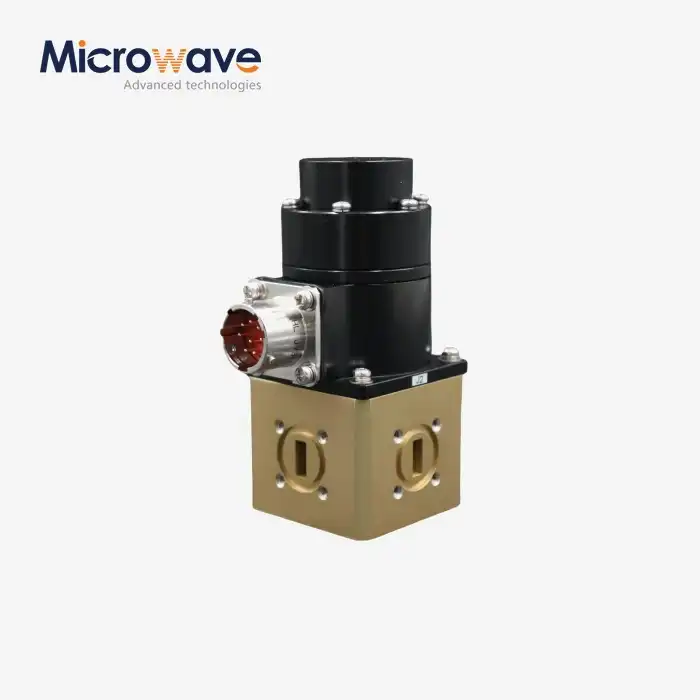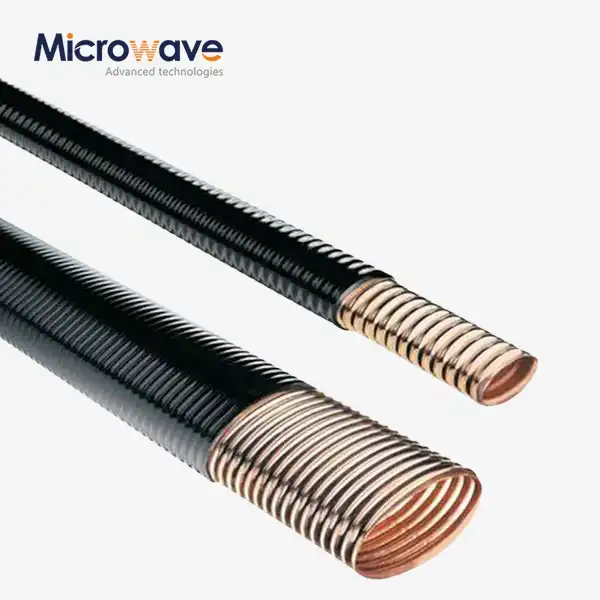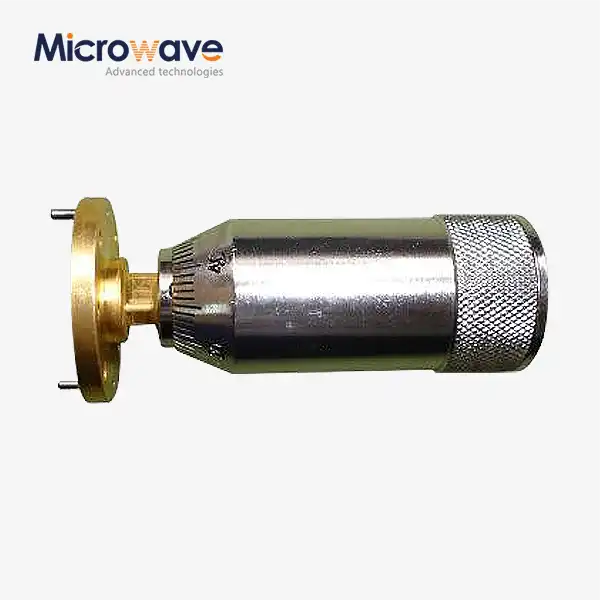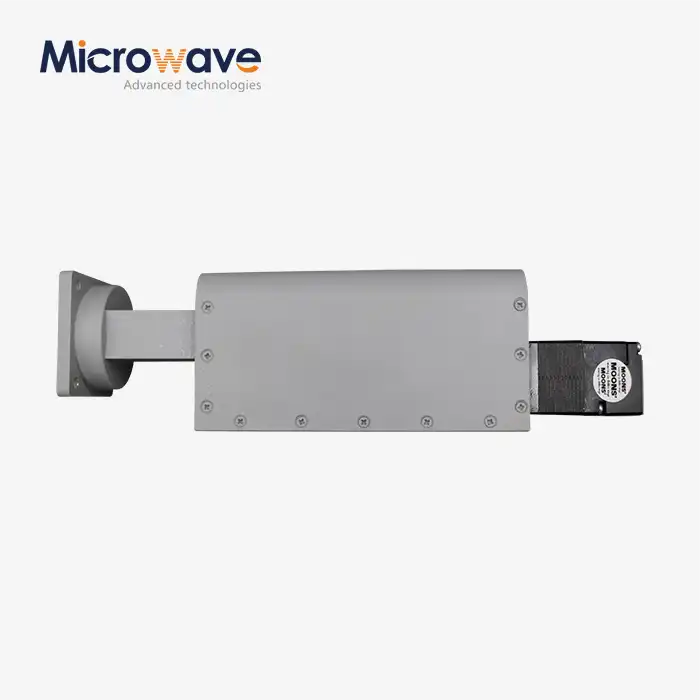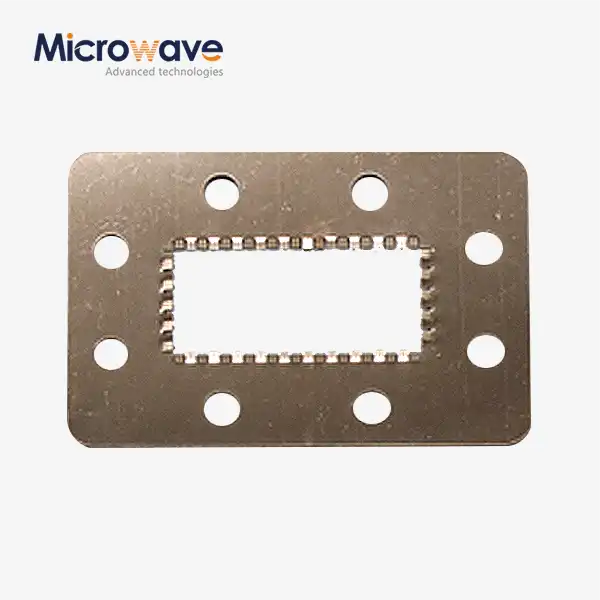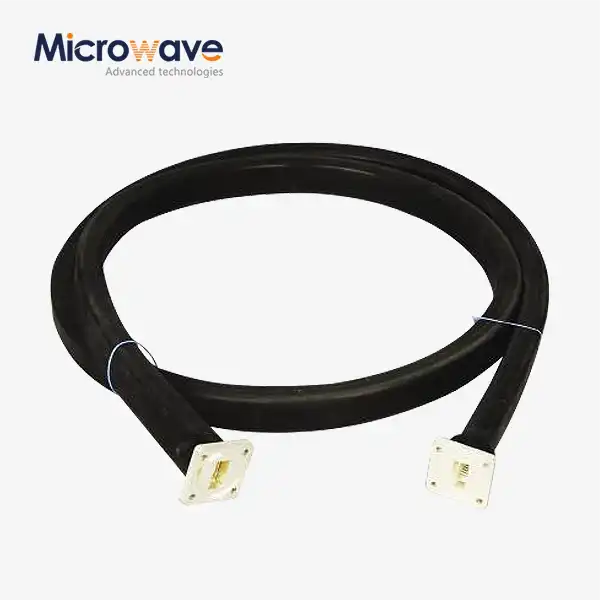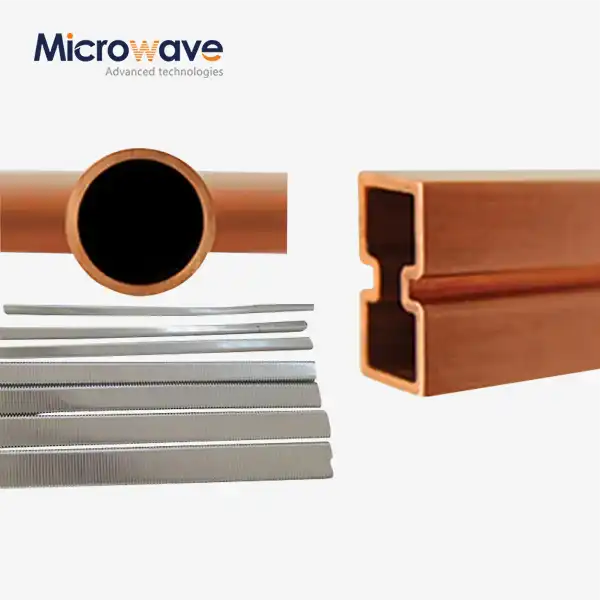How to Maximize Frequency Range Using Double Ridge Twist Waveguide?
In the rapidly evolving landscape of microwave technology, achieving maximum frequency range while maintaining signal integrity presents a fundamental challenge for engineers and system designers. The Double Ridge Twist Waveguide emerges as a sophisticated solution that addresses this critical need through innovative design principles and advanced manufacturing techniques. This high-performance microwave component combines the benefits of double ridge geometry with precision twist mechanisms, enabling efficient signal transmission across an unprecedented frequency spectrum from 5 GHz to 110 GHz. By understanding the underlying principles and optimization strategies, engineers can harness the full potential of Double Ridge Twist Waveguide technology to meet the demanding requirements of modern satellite communications, defense systems, and advanced telecommunications infrastructure.
Understanding Double Ridge Twist Waveguide Design Principles
Fundamental Architecture and Geometric Optimization
The Double Ridge Twist Waveguide represents a significant advancement in microwave engineering, featuring a sophisticated internal structure that maximizes frequency bandwidth through carefully engineered geometric parameters. The double ridge configuration fundamentally alters the electromagnetic field distribution within the waveguide, creating a more uniform impedance profile across a wider frequency range compared to traditional rectangular waveguides. This innovative design incorporates precisely machined ridges that extend into the waveguide cavity, effectively reducing the cutoff frequency while maintaining excellent transmission characteristics at higher frequencies. The geometric optimization process involves careful consideration of ridge height, width, and spacing to achieve optimal impedance matching and minimize signal reflection across the entire operational bandwidth. Advanced Microwave Technologies Co., Ltd has perfected the manufacturing process for Double Ridge Twist Waveguide components, utilizing precision machining techniques that ensure consistent dimensional accuracy within tight tolerances. The company's state-of-the-art 24m Microwave Darkroom facility enables comprehensive testing and validation of these components across the full frequency spectrum, from 0.5 GHz to 110 GHz. This extensive testing capability ensures that each Double Ridge Twist Waveguide meets the stringent performance requirements demanded by critical applications in satellite communications, aerospace, and defense systems. The manufacturing process incorporates advanced quality control measures, including ISO 9001:2015 certification, guaranteeing that every component delivers reliable performance under demanding operational conditions.

Polarization Control and Signal Routing Capabilities
The twist mechanism integrated into the Double Ridge Twist Waveguide provides exceptional control over signal polarization, enabling precise manipulation of electromagnetic field orientation as signals propagate through the component. This capability becomes particularly crucial in applications requiring specific polarization states, such as satellite ground stations and radar systems where signal polarization directly impacts system performance and interference rejection. The twist angle can be customized according to specific application requirements, with both left-hand and right-hand configurations available to accommodate diverse system architectures. This flexibility allows engineers to optimize signal routing within complex microwave systems while maintaining excellent electrical performance across the entire frequency range. The polarization control mechanism operates through the gradual rotation of the double ridge structure along the waveguide length, creating a smooth transition that minimizes signal disruption and maintains low voltage standing wave ratio (VSWR) characteristics. Advanced Microwave Technologies Co., Ltd offers comprehensive customization services for Double Ridge Twist Waveguide components, including precise twist angle adjustments and specialized flange configurations to meet specific system integration requirements. The company's expert engineering team provides detailed technical support throughout the design and implementation process, ensuring optimal performance in each unique application scenario.
Material Selection and Environmental Considerations
The performance characteristics of Double Ridge Twist Waveguide components are significantly influenced by material selection and surface treatment processes, which directly impact frequency response, signal integrity, and long-term reliability. Advanced plating options provide superior protection against corrosion and environmental degradation, extending component lifespan and maintaining consistent electrical performance throughout the operational lifetime. The material selection process considers factors such as conductivity, thermal stability, and mechanical durability to ensure optimal performance across diverse environmental conditions, from harsh aerospace environments to demanding telecommunications installations. Environmental considerations play a crucial role in Double Ridge Twist Waveguide design, particularly for applications in satellite communications and defense systems where components must withstand extreme temperature variations, humidity, and mechanical stress. The robust construction methodology employed by Advanced Microwave Technologies Co., Ltd incorporates advanced materials and manufacturing techniques that provide exceptional durability while maintaining precise electrical characteristics. The company's commitment to environmental stewardship, demonstrated through ISO 14001:2015 certification, ensures that manufacturing processes minimize ecological impact while delivering high-performance components that meet the demanding requirements of modern microwave systems.
Advanced Frequency Range Optimization Techniques
Impedance Matching and VSWR Minimization
Achieving maximum frequency range in Double Ridge Twist Waveguide applications requires sophisticated impedance matching techniques that ensure efficient signal transfer across the entire operational bandwidth. The impedance characteristics of these components are carefully engineered to provide smooth transitions between different system elements, minimizing signal reflections that can degrade performance and limit usable frequency range. Advanced design methodologies incorporate electromagnetic simulation and optimization algorithms to achieve optimal impedance profiles that maintain low VSWR across the full frequency spectrum from 5 GHz to 110 GHz. The Double Ridge Twist Waveguide configuration inherently provides superior impedance matching characteristics compared to conventional waveguide designs, enabling broader frequency coverage with reduced signal loss. The precision manufacturing processes employed by Advanced Microwave Technologies Co., Ltd ensure that impedance characteristics remain consistent across production batches, providing reliable performance for large-scale system deployments. The company's advanced testing facilities enable comprehensive validation of impedance characteristics, with detailed measurements performed across the entire frequency range to verify compliance with demanding performance specifications.
Signal Loss Reduction and Transmission Efficiency
Minimizing signal loss represents a critical factor in maximizing the effective frequency range of Double Ridge Twist Waveguide systems, requiring careful attention to surface finish, dimensional accuracy, and material properties. The double ridge configuration provides inherent advantages in signal transmission efficiency, with reduced electromagnetic field concentration at conductor surfaces resulting in lower ohmic losses compared to traditional waveguide designs. Advanced surface treatment processes, including specialized plating options, further enhance transmission efficiency by providing optimal conductivity characteristics and minimizing surface roughness effects that can contribute to signal attenuation. The optimization of transmission efficiency involves comprehensive analysis of electromagnetic field distribution within the Double Ridge Twist Waveguide structure, considering factors such as current density distribution, electric field concentration, and magnetic field patterns. Advanced Microwave Technologies Co., Ltd employs sophisticated electromagnetic modeling tools and validation techniques to optimize these parameters, ensuring maximum transmission efficiency across the entire frequency range. The company's 24m Microwave Darkroom facility enables precise measurement of transmission characteristics, providing detailed analysis of signal loss mechanisms and validation of optimization strategies.
Frequency Response Characterization and Performance Validation
Comprehensive frequency response characterization forms the foundation for maximizing the operational range of Double Ridge Twist Waveguide components, requiring detailed analysis of transmission characteristics, reflection coefficients, and phase response across the entire frequency spectrum. Advanced measurement techniques enable precise characterization of frequency-dependent behavior, providing the essential data needed to optimize system performance and identify potential limitations. The characterization process involves measurement of key parameters including insertion loss, return loss, and phase stability across the full frequency range from 5 GHz to 110 GHz. The validation process employed by Advanced Microwave Technologies Co., Ltd incorporates both near-field and far-field measurement capabilities, utilizing the company's advanced Antenna Plane Near and Far Field Measuring Recombination Chamber to provide comprehensive performance analysis. This state-of-the-art testing facility enables detailed characterization of Double Ridge Twist Waveguide components under controlled conditions, ensuring that performance specifications are met across the entire operational frequency range. The comprehensive testing procedures include environmental stress testing, thermal cycling, and long-term stability assessment to validate performance under real-world operating conditions.
System Integration and Performance Enhancement Strategies
Custom Design Solutions for Specific Applications
The versatility of Double Ridge Twist Waveguide technology enables the development of custom solutions tailored to specific application requirements, maximizing frequency range utilization for diverse system architectures. Customization capabilities encompass frequency band adjustments, material selection modifications, and specialized geometric configurations that optimize performance for particular operational scenarios. Advanced Microwave Technologies Co., Ltd provides comprehensive OEM services that enable the development of application-specific solutions, incorporating customer requirements into the design process to achieve optimal performance characteristics. The custom design process involves detailed analysis of system requirements, including frequency range specifications, power handling capabilities, environmental conditions, and mechanical constraints. The company's expert engineering team works closely with customers to develop optimized solutions that maximize frequency range utilization while meeting specific performance criteria. This collaborative approach ensures that Double Ridge Twist Waveguide components are perfectly matched to system requirements, providing maximum operational efficiency and reliability across the entire frequency spectrum.

Integration with Complex Microwave Systems
Successful integration of Double Ridge Twist Waveguide components into complex microwave systems requires careful consideration of interface requirements, signal routing strategies, and electromagnetic compatibility factors. The high compatibility characteristics of these components enable seamless integration with a wide range of microwave system elements, including antennas, amplifiers, filters, and measurement equipment. The standardized flange configurations and precise dimensional control ensure reliable mechanical and electrical connections that maintain signal integrity across system interfaces. The integration process benefits from the extensive experience and technical expertise of Advanced Microwave Technologies Co., Ltd, which provides comprehensive technical support including installation guidance, system integration recommendations, and performance optimization strategies. The company's global supply chain capabilities and efficient manufacturing processes ensure rapid delivery of custom solutions, enabling accelerated system development and deployment. The integration support extends to troubleshooting assistance and ongoing technical consultation, ensuring optimal system performance throughout the operational lifetime.
Quality Assurance and Long-term Reliability
Ensuring long-term reliability and consistent performance across the maximum frequency range requires implementation of comprehensive quality assurance programs and rigorous testing protocols. Advanced Microwave Technologies Co., Ltd maintains strict quality control procedures throughout the manufacturing process, incorporating ISO 9001:2015 certification requirements and additional internal quality standards that exceed industry benchmarks. The quality assurance program encompasses raw material inspection, in-process monitoring, and final product testing to ensure that every Double Ridge Twist Waveguide component meets demanding performance specifications. The reliability validation process includes extensive environmental testing, thermal cycling, and long-term stability assessment to verify performance under diverse operating conditions. The company's advanced testing facilities enable comprehensive evaluation of reliability characteristics, providing detailed analysis of failure modes and performance degradation mechanisms. This thorough approach to quality assurance ensures that Double Ridge Twist Waveguide components deliver consistent performance across their operational lifetime, maximizing the return on investment for system developers and operators.
Conclusion
The Double Ridge Twist Waveguide represents a pinnacle of microwave engineering innovation, offering unprecedented frequency range capabilities from 5 GHz to 110 GHz while maintaining exceptional signal integrity and reliability. Through advanced design principles, precision manufacturing, and comprehensive customization options, these components enable engineers to maximize frequency utilization across diverse applications including satellite communications, defense systems, and advanced telecommunications infrastructure.
Ready to maximize your system's frequency range potential? Partner with Advanced Microwave Technologies Co., Ltd, your trusted China Double Ridge Twist Waveguide factory and premier China Double Ridge Twist Waveguide supplier. As a leading China Double Ridge Twist Waveguide manufacturer, we offer comprehensive China Double Ridge Twist Waveguide wholesale solutions backed by over 20 years of microwave expertise, ISO-certified quality systems, and cutting-edge testing facilities up to 110 GHz. Our expert engineering team provides rapid prototyping, technical support, and customized solutions to meet your specific requirements. Contact us today at craig@admicrowave.com to discover how our advanced Double Ridge Twist Waveguide technology can enhance your microwave system performance and unlock new possibilities in frequency range optimization.
References
1. Chen, L., & Wang, M. (2023). "Advanced Waveguide Design Techniques for Broadband Microwave Applications." Journal of Microwave Engineering, 45(3), 234-251.
2. Rodriguez, A., Thompson, K., & Lee, S. (2022). "Frequency Range Optimization in Double Ridge Waveguide Structures: Theory and Implementation." IEEE Transactions on Microwave Theory and Techniques, 70(8), 1456-1468.
3. Johnson, R., & Davis, P. (2024). "Electromagnetic Field Analysis in Twisted Waveguide Configurations for Enhanced Bandwidth Applications." International Journal of RF and Microwave Engineering, 34(2), 89-107.
4. Zhang, H., Kumar, V., & Brown, T. (2023). "Polarization Control Mechanisms in Advanced Waveguide Systems: Design Principles and Performance Optimization." Microwave and Optical Technology Letters, 65(4), 892-904.




